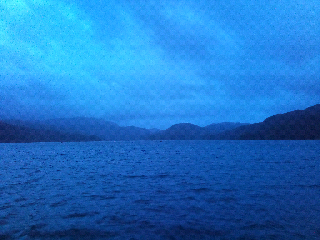いや、とりあえず大きな調査が終わった。天候がひどく、潮もわるい。大変つかれました。学生らは本当に頑張ったと思う。 Regardless of the terrible weather and the poorly timed tidal conditions, this year's main event was completed. The students did a terrific job in carryout most of the fieldwork! 今年は例年と同じように、愛媛大学の研究グループ、橋本研、衛生研と僕達だったが、今年からは万田先生のグループ(他大学の学生ら)も乗船した。彼ら(M田グループ)は気象の調査をしているので、ヘリウムバルーンを何回もあげ、使い捨てのCTDも何回もうった。 This year, like last year, members from Ehime University, Lab, Fisheries Food Hygiene Lab, and us took part in the cruise. However, this year Dr. Manda's group also joined the cruise. They are interested in examining weather patterns and oceanographic phenomena, so all throughout the cruise, they launched weather balloons and fired disposable CTDs. GPSを装備した温度・湿度ロガー。A GPS equipped temperature and humidity logger. 長崎から那覇にむかって、ぜんせんをとうたとき、彼らは一所懸命このバルーンを何回も何回もあげてました。 From Nagasaki to Naha, the students of the group fired away at hourly intervals, as we passed trough the weather front. 那覇についてら、やっと我々も調査ができる。今回の美ら海水



